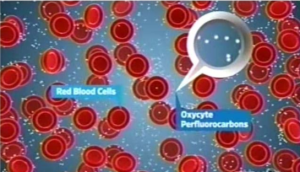Do perfluorocarbon emulsions nucleate while in blood vessels? Seems likely, particularly since there are shear forces in circulation that are brought to bear and these are variable, depending upon blood volume, blood pressure, and percent of hemodilution during the procedure and thousands of other things that are likely going to be brought to bear.
Daily Archives: September 12, 2017
Thoughts on perfluorocarbon droplets: coalescence or diffusion
It is an obvious thought, but not one I considered, but if one gives perfluorocarbon based blood substitute emulsions to individuals, their body temperature may change the manner of(diffusion and/or coalescence of droplets), shear forces in the blood stream, and rate, and morphology of droplets once engulfed (large droplets, smaller droplets, rate and amount of re-emulsification of the perfluorocarbons within lysosome/phagolysosomes). So what happens if someones body temperature is 97.5 or what if the recipient of artificial blood is febrile at 104? This concept was brought up in my mind by a report, a publication by Mara G. Freire et al, 2005 J. Colloid and Interface Science, of behavior of droplets in experiments in vitro. I believe that when we did infusions of perfluorocarbon emulsions in larger mammals (the Leland Clark Jr, laboratory, back in the 1970s) body temperature was always recorded, however I don’t believe those numbers were part of the morphometric metadata for “mean particle size” of droplets within lysosomes, in vivo, in measurements of particle size in liver biopsy samples.
Two areas of emulsion stability are relevant (at least two) in vivo: within the blood stream and within the cell. The latter looks to have two processes going on: — aging of the emulsion which includes coalescence of droplets. Freire et al 2005 indicate that droplet size is an indicator of emulsion age (i would agree in the blood stream), but with within the cell, perhaps there is a critical size – as a divide, where at one size and < that the act of droplets growing smaller to be lost by diffusion predominates, and at that critical size or larger –oswald ripening or coalescence occurs. The “divide” as it were, may have something to do with the 1) physical and chemical characteristics of the perfluorochemical, 2) the enzymes poured into phagolysosomes — likely to vary with cell type, temperature, state of enzyme activation from baseline, and in response to the perfluorochemical, 3) proximity of an “air” interface (as in the lung), 4) mechanical forces (as in inflation, deflation of the lobes of the lung or flow through the blood vessels). Whether hydrate nucleation occurs?…. would be nice to find some literature sort this out.

So in looking for microscopy and perfluorocarbon emulsions I ran onto a cute diagram, though probably so far from reality as to be laughable, and perhaps only relevant for the first nanosecond before the white cells begin gulping emulsion particles up, and before nucleation or coalescing of the emulsion particles begins to occur in the blood stream. I don’t know to whom the credit goes, whether to the writer of his thesis, Cameron Smith, Virginia Commonwealth University (wherein I found the cartoon) or to Oxycyte, referenced in his legend, here is –A cartoon illustrating the relative size of red blood cells (diameter approx 6-8 µm) compared to Oxycyte® PFC emulsion particle size (approx 0.1-04µm).